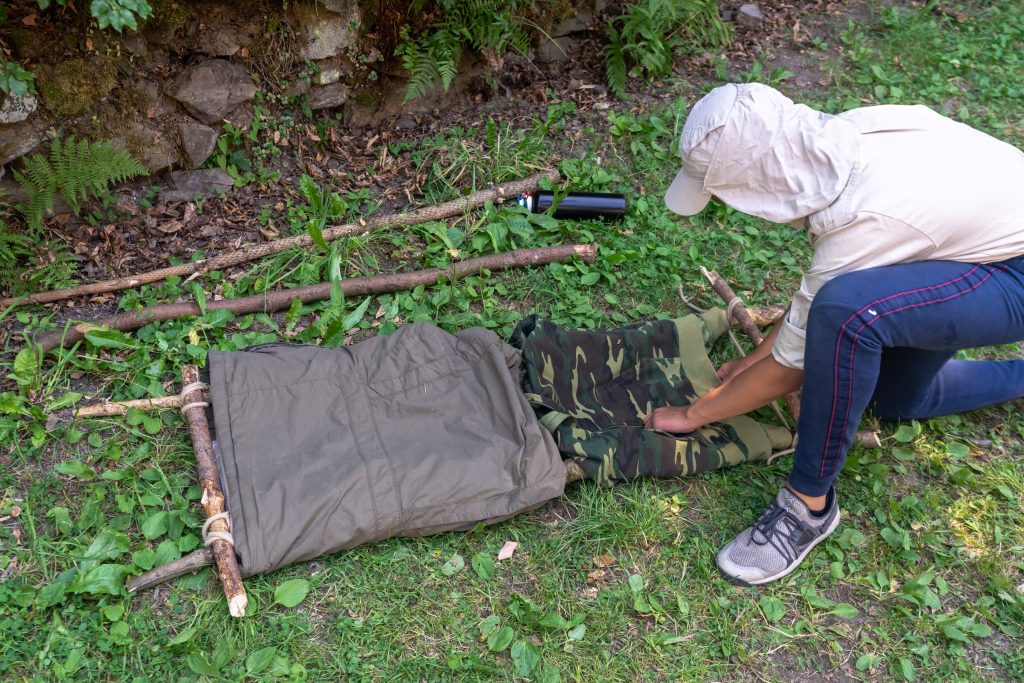Survival situations can be unpredictable and challenging, especially when you find yourself lost or stranded in the wilderness. In such scenarios, having solid navigation skills is crucial to finding your way back to safety. Whether you’re an avid hiker, an adventurous explorer, or simply a nature enthusiast, this article will provide you with valuable survival navigation tips to help you navigate through unknown terrain and increase your chances of a successful rescue.
Carry Essential Navigation Tools
Before embarking on any outdoor adventure, it’s important to equip yourself with the necessary navigation tools. A reliable compass should be at the top of your list, as it will help you determine directions even without technology. Additionally, a topographic map of the area you’re exploring can provide invaluable information about the terrain, landmarks, and water sources. Consider packing a GPS device as a backup, but remember that it relies on batteries and signal availability. Always carry spare batteries and know how to use your tools effectively before venturing into the wilderness.
Study the Terrain and Plan Ahead
Understanding the terrain you’re about to explore is a fundamental aspect of survival navigation. Study topographic maps and satellite imagery to identify prominent landmarks, such as mountains, rivers, or distinctive rock formations. Plot potential routes, paying attention to natural features that can guide you, like ridge lines or valleys. Take note of water sources, as they are essential for survival. In your planning, consider alternative routes and escape options in case of unexpected obstacles or changing weather conditions. By familiarizing yourself with the area before setting foot in it, you’ll be better prepared to handle any challenges that arise.
Develop Orienting Skills
Orienting yourself in the wilderness is key to survival. Start by identifying a fixed point on the horizon, such as a mountain peak or a distinctive tree, and use it as a reference while navigating. Learning how to read natural signs, like the position of the sun or moon, can help you determine cardinal directions during the day or at night. The watch method is another useful technique: point the hour hand towards the sun, and the midpoint between the hour hand and 12 o’clock will roughly indicate south in the Northern Hemisphere. Practicing these orienteering skills in familiar areas will improve your confidence and ability to navigate successfully.
Use Landmarks and Navigation Aids
In unfamiliar terrain, relying on natural and man-made landmarks is essential for accurate navigation. Natural features, such as distinctive rock formations, streams, or tree formations, can serve as reliable reference points along your route. Keep an eye out for signs of human presence, such as trails, footprints, or even cairns, as they can lead you to safety. In some regions, there may be established navigation aids, such as marked trails or guideposts, which can be highly useful for staying on track. However, it’s important not to solely depend on these aids, as they may not always be available or may have been altered by natural forces.
Learn Basic Navigation Techniques
Understanding and practicing basic navigation techniques will significantly enhance your survival skills. Dead reckoning, for instance, involves keeping track of your direction and estimated distance traveled. This method utilizes a compass and is useful when visibility is limited or when traveling off-trail. Another valuable technique is triangulation, which involves identifying and plotting your position on a map using at least two known landmarks. By intersecting the lines from these landmarks, you can determine your exact location. Knowing how to navigate using these methods can help you make informed decisions and navigate more efficiently in challenging situations.
Stay Calm and Use Situational Awareness
Maintaining a calm and composed mindset is crucial when facing a survival situation. Panic can cloud your judgment and hinder your ability to navigate effectively. Instead, focus on enhancing your situational awareness. Take regular breaks to assess your surroundings, noting any changes in the landscape or familiar landmarks. Pay attention to natural indicators, such as wind patterns or animal behavior, as they can provide valuable clues about nearby resources or potential dangers. By staying alert and observant, you can adapt your navigation strategy accordingly and make informed decisions based on the current situation.
Leave a Trail and Mark Your Progress
In a survival scenario, leaving a visible trail can greatly aid both your navigation and potential rescue efforts. Use bright colored tapes or ribbons to mark your path as you travel. This way, you can easily trace your steps backward if needed. Additionally, make note of any unique or distinguishable features along your route to help you identify familiar areas. Creating landmarks by arranging rocks or constructing simple structures like cairns can also be useful for marking your progress. However, be mindful of the environmental impact and avoid disturbing the natural surroundings unnecessarily.
Learn Basic Navigation Signals
In emergency situations, communication can be critical for your rescue. Learning basic navigation signals can help you attract attention and alert others to your presence. International distress signals, such as three repeated whistle blasts, flashes of light, or vocal shouts, can indicate that you need assistance. Carrying a signaling mirror or a whistle in your survival kit can be immensely helpful in such circumstances. Additionally, if you come across potential rescue teams or aircraft, using recognized distress signals, like waving both arms or creating visible ground-to-air signs, can significantly increase your chances of being noticed and rescued.
Survival navigation skills are invaluable when exploring the great outdoors, ensuring your safety and enabling you to find your way back in challenging situations. By carrying essential navigation tools, studying the terrain, developing orienting skills, utilizing landmarks and navigation aids, learning basic techniques, staying calm, leaving a trail, and understanding navigation signals, you can enhance your chances of successfully navigating through unfamiliar wilderness. Remember, practice and preparation are key, so invest time in honing your navigation abilities before embarking on any outdoor adventure. Stay safe, stay prepared, and embrace the beauty of nature with confidence.















